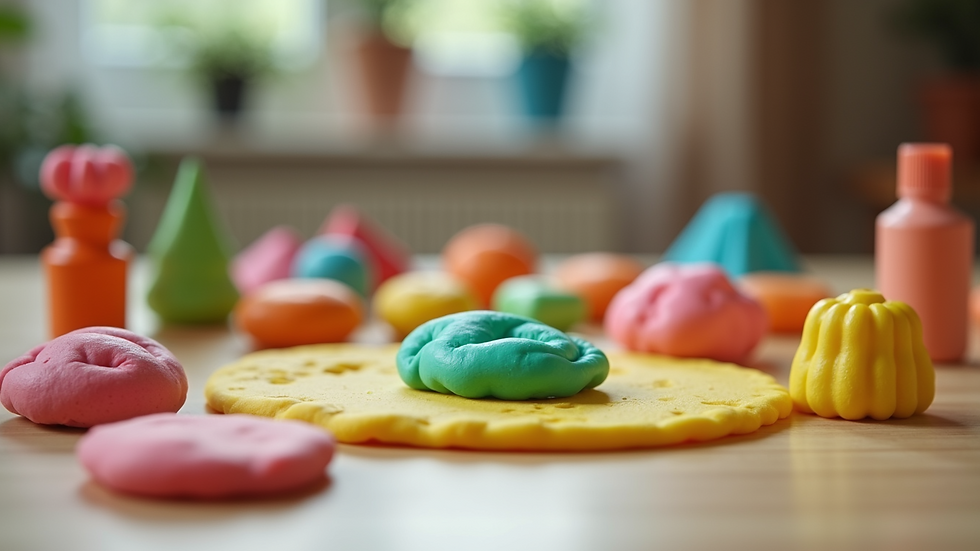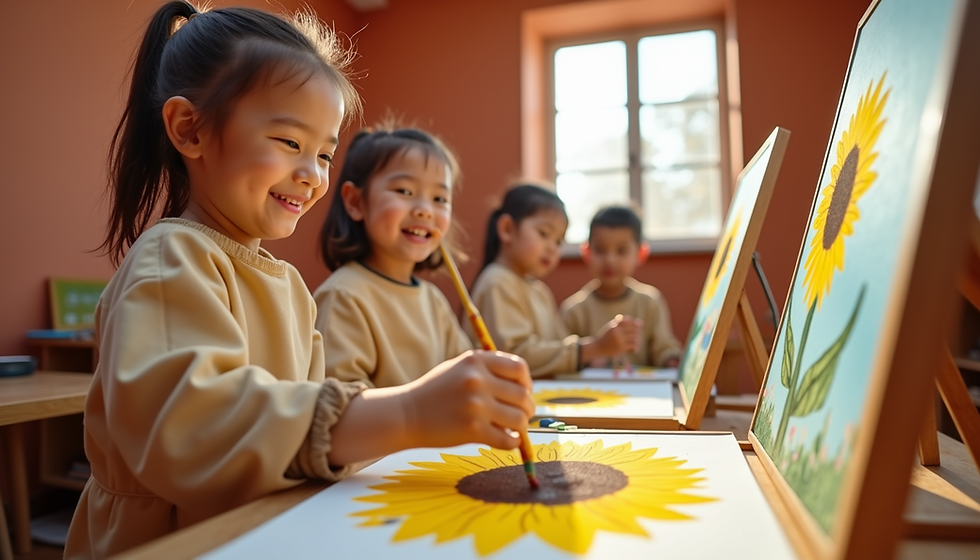Unleash Your Creativity with These Extraordinary DIY Sensory Play Ideas at Home
- Patricia Spears
- Jul 21
- 4 min read
In the world of childhood development, sensory play holds a unique and essential role. Engaging our little ones in activities that stimulate their senses not only enhances their cognitive growth but also hones their fine motor skills and emotional regulation. The best part is that you don’t need to buy expensive toys or sensory kits. With a bit of creativity and everyday items you already have, you can create fantastic sensory experiences right at home.
This blog post will share a variety of incredible DIY sensory play ideas that are not only simple to make but also packed with fun. Get ready to unleash your creativity and watch young minds flourish!
What is Sensory Play?
Sensory play involves activities that engage a child’s senses: sight, sound, touch, taste, and smell. It encourages exploration and helps children understand the world around them. Sensory play is beneficial for all age groups, from infants to older kids.
Incorporating sensory experiences can occur through various categories, including tactile materials, scents, sounds, and flavors. As you explore the ideas below, consider how each activity can enrich your child’s learning and sensory experience.
1. DIY Sensory Bins
Sensory bins are highly versatile and a great way to inspire creativity. Start by selecting a large container or plastic tub. Fill it with a base material like rice, dried beans, or sand. Next, add small toys, measuring cups, or natural items like leaves and pinecones for exploration.
You can alter the theme of your sensory bins according to the seasons or upcoming holidays! For instance, you might use green rice and plastic dinosaurs for a fun prehistoric adventure, or orange beans along with pumpkin cutouts for an autumn theme.

Sensory bins can keep children engaged for long stretches of time, allowing them to immerse themselves in imaginative play. In fact, studies reveal that children can engage with sensory activities for up to 45 minutes without losing interest.
2. Edible Sensory Play
Creating edible, playful experiences is always a hit with kids. Consider making homemade playdough with flour, salt, water, and food coloring. This tactile material is perfect for molding and sparks creativity.
For an added twist, you could make chocolate playdough. Using cocoa powder gives it a delightful smell and keeps it safe to taste. Help your child mold their creations, combining artistic expression with sensory engagement.
Children will love the experience of shaping their creations and enjoying a tasty treat afterward. In fact, 85% of children find sensory activities that are also edible to be more enjoyable!
3. Water Play Stations
Water play can be soothing and captivating. Create a water station in your backyard or on a kitchen counter. Fill containers with water and provide various tools such as cups, spoons, and small plastic animals. Adding soap bubbles can introduce another layer of tactile exploration.
Consider adding food coloring to the water for a visually appealing experience. Also, incorporating ice cubes or water beads introduces varying textures and temperatures for children to explore. This setup makes for an engaging sensory experience that captivates kids of all ages.
4. Textured Collages
Gather some magazines, fabric, and other textured materials for an exciting collage activity. Lay out a large sheet of paper or cardboard as your child’s canvas.
Provide scissors, glue, and a range of textures—smooth, rough, shiny, and fuzzy. As your child selects and adheres different items to their canvas, they’ll not only explore textures but also enhance their fine motor skills. This activity promotes creativity, as children make unique pieces of art.
5. Nature Exploration Kits
Some of the best sensory experiences come straight from nature. Build a nature exploration kit by collecting items like magnifying glasses, containers, and sensory journals. Go for a walk outside with your child, gathering natural treasures such as leaves, rocks, or flowers.
Encourage them to describe what they see, feel, and smell while collecting items. This hands-on experience deepens their connection with the environment and stimulates their observational skills.
6. Scent Exploration Jars
Scent is a powerful sense that can trigger memories and emotions. Create scent exploration jars using small containers filled with a variety of items like herbs, spices, cotton balls soaked in essential oils, or aromatic fruits. Let your child guess the scents and discuss what each aroma means to them.
Pair this with an art project by inviting them to write or illustrate their favorite scents. This approach bridges sensory exploration and language development in a creative way.
Creative Sensory Adventures Await
DIY sensory play provides a rewarding way to nurture creativity, cognitive development, and emotional awareness in children. By using common household items and natural elements for playful activities, you foster sensory exploration while creating treasured memories with your little ones.
As you try these DIY sensory play ideas at home, keep in mind that the goal is to encourage curiosity and full immersion in the experience. Embrace the mess and celebrate the joy of discovery. Unleashing creativity has never been more enjoyable!

Ultimately, you are not just creating activities; you are cultivating a lifelong love for learning and experience. Grab your supplies, and let the sensory adventure begin!






Comments